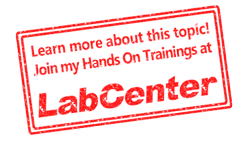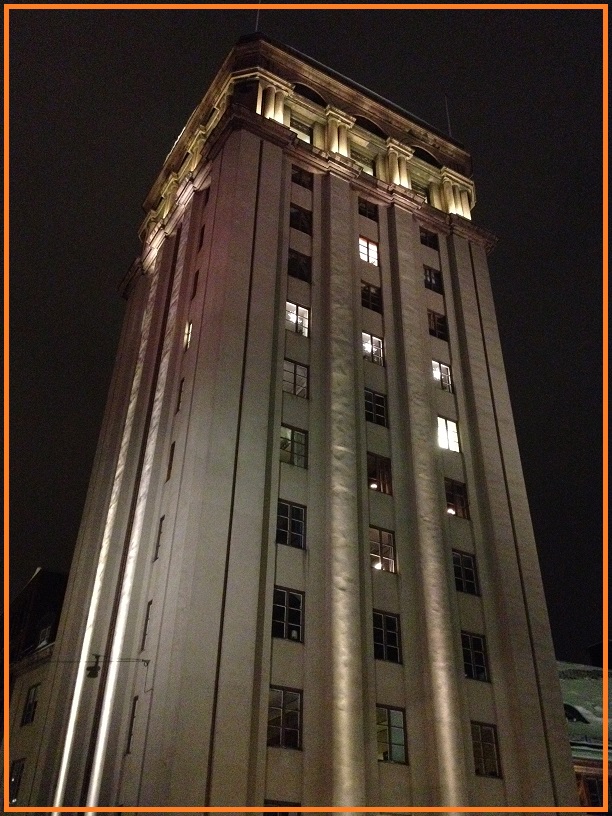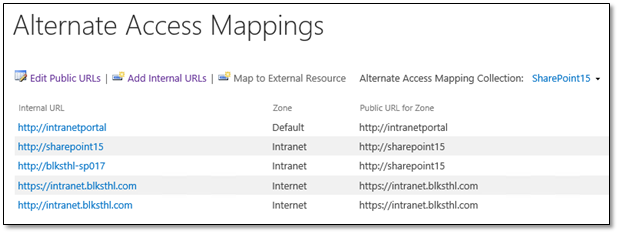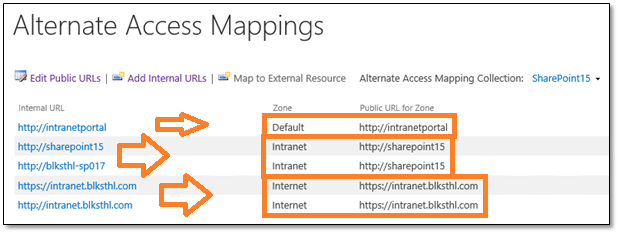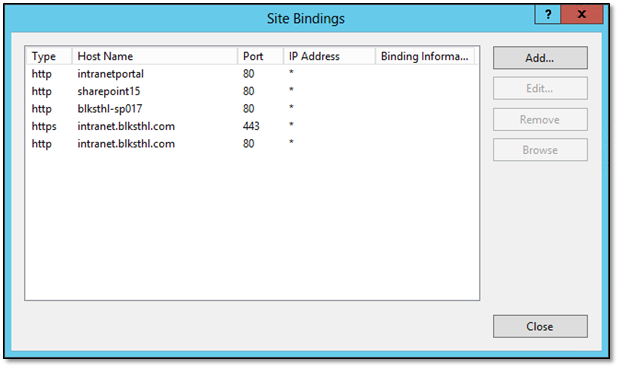Alternate Access Mapping Basics in SharePoint 2013
(This post is in its entirety valid for SharePoint 2010 as well)
Explains how you should look at Alternate Access Mappings – left to right.
Alternate Access Mappings is something that most SharePoint engineers or administrators struggles with. More often than not, you get it right in the end but we are not really sure why it works or if it really works the way we want it to.
This, is my attempt to make it easy to understand.
| Note: This is part 1 in a series, the next part will show how to configure DNS and a simple scenario adding a new NetBIOS name as URL to a Web Application. |
| Note: For the complete guide, with DNS steps and 4 different scenarios including https, download the free Whitepaper from TechNet: The final guide to Alternate Access Mappings |
In order to make AAMs simpler to understand, look at it a bit differently, start with this simple table:
Left area Internal URL’s
Right area Public URL’s with a zone
Middle area Zones, is what connects Internal URL’s to Public URL’s, many to one.
Internal URL redirects or transforms to a Public URL, from left, to right. The URL on the left, is what you enter in the address field in your browser, the Public URL on the right is what you will see once there, this goes for visible and invisible links as well.
Internal URL format: Protocol + URL (+non default port)
Public URL is the address of the Web Application for one of the five zones available. The ‘Default’ must be filled out and has some special properties/uses, the other four are optional. You can only have five Public URL’s per Web Application.
This is the URL that the browser will be redirected to in the end.
Public URL format: Protocol + URL (+non default port)
Zone is a label representing a Public URL, the zone is used to ‘connect’ an Internal URL to a Public URL. The zone names has no relation what so ever with the four Internet Explorer security zones (Internet, Local Intranet, Trusted sites and Restricted sites) and could just as easily been named 1,2,3,4 and 5. A zone can also represent an authentication provider.
Zones: Default, Intranet, Internet, Custom, Extranet
Example:
| Note: Based on the Zone selected for every Internal URL, they will be connected to a Public URL. |
From left – to right…
The zones might as well be represented by numbers:
| Note: Try to always use the most used URL as the default Public URL. This is what will be used by other services, like crawl and in certain other links. |
Translated to SharePoint GUI, this same setup would look like this:
| Note: Filtered on this Web Applications Alternate Access Mapping Collection only. Same Alternate Access Mappings as in the Example table above. |
You will see that if you click on any of the ‘Internal URLs’ that you can select zone, and with the zone, the Public URL it will be connected to:
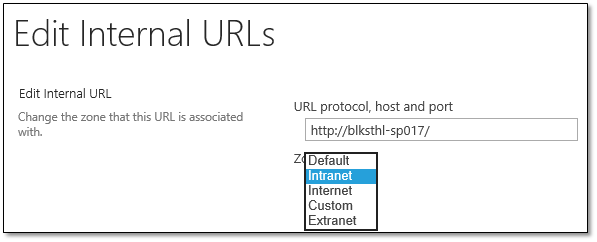
In addition to the actual Alternate Access Mapping in SharePoint Central Administration, you also have to add a Binding in IIS, contrary to what many believe, except for the initial hostheader when you create the web application, SharePoint does not do that for you, so you have to do it manually.
The example above would show up in IIS Bindings like this:
As you can see, in IIS 8.0 and Windows Server 2012, the https binding does show up as a hostname, in IIS 7.5 and Windows Server 2008 R2, the hostname is determined by the name configured in certificate used when adding that binding and hidden in this view.
That’s it! When you have configured your AAM’s and Bindings correctly, given that you have name resolution and IP addresses in order and connectivity from the client to the server(s) and all other aspects in order, you can now start to use the URL’s you want.
Enjoy!
Regards

